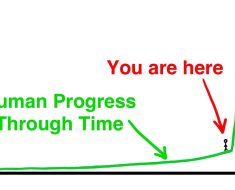
By Gurnam Singh | Opinion |
INTRODUCTION – CONCEPTUALISING INTELLIGENCE
Any conversation about the implications of artificial intelligence (AI) must begin with a definition of intelligence. Scholars, theologians, prophets, and gurus have long been fascinated by the mystery of creativity and the human mind think. In Sikhi, it is precisely such qualities that establish the uniqueness of the human mind and that is what differentiates us from other living entities. To be born a human (manuk/ਮਨੁੱਖ) is considered a great blessing, providing the opportunity for true self-realisation. Through a heightened state of consciousness, one ultimately comes to appreciate and feel the universal divine.
Closely associated with the human mind is the complex notion of human intelligence. There are essentially two different approaches to defining human intelligence. One approach reflects a mechanistic view, likening the human brain to a supercomputer. From this perspective, human intelligence is correlated with the capacity to perform cognitive challenges, akin to the classical notion of IQ. This approach suggests that intelligence can be measured according to an IQ scale, indicating the speed and breadth with which our brains can solve puzzles. This view underpins efforts to build machines that mimic the neural networks that process data in the human brain.
The other perspective is that, given the complexity of the human brain and consciousness, the uniqueness of human intelligence cannot be replicated by machines. Moreover, theologians argue that a fundamental difference between machines and humans is the existence of the human soul. The problem with this seemingly straightforward proposition is that there is no consensus on what constitutes ‘the soul’? However, this has not stopped theologians from positing the possibility of non-human super intelligence. Reflected in folklore and myth across various cultural traditions, this appears through mythological narratives of unimaginably powerful divine beings with superhuman intelligence. The Ancient Greek and Hindu Gods are perhaps the most compelling example of such super intelligent beings.
THE EVOLUTION AI
AI has evolved significantly since its conceptual beginnings in ancient myths and philosophical discourses. The journey from the early days of modern computing in the 1940s to today’s advanced machine learning systems highlights a remarkable trajectory of technological progress. Alan Turing’s proposal of the Turing Test in 1950 was a significant milestone, challenging machines to exhibit human-like intelligence.
The 1960s saw a surge of enthusiasm for AI, with significant progress in areas such as game playing, natural language processing, and theorem proving. However, by the 1970s, limitations in computing power slowed progress.
The 1980s brought a revival in AI research with the development of expert systems, and by the 1990s, machine learning began to dominate the field. Today, deep learning, inspired by the neural networks of the human brain, powers applications in image recognition, natural language processing, and robotics. This progress has led to the emergence of Artificial General Intelligence (AGI), a form of AI with cognitive capabilities akin to human intelligence, capable of learning and solving problems across various domains without specific training. While the future is horrendously difficult to predict, there is a growing consensus that AGI will arrive within most of our lifetimes, and even by the end of this decade.
QUANTUM COMPUTING: A QUANTUM LEAP FOR AI
In his recent book, ‘Quantum Supremacy: How the Quantum Computer Revolution Will Change Everything’ American physicist and science writer, Michio Kaku argues that with the coming of quantum computing we soon see the emergence of AGI, without which it would have been confined to the realms of science fiction. For Kaku, quantum computing represents a frontier in technological advancement that promises to revolutionise AI.
Quantum computers leverage the principles of quantum mechanics to perform computations at speeds unimaginable with classical computers. For instance, Google’s Sycamore quantum computer demonstrated the ability to solve a problem in 200 seconds that would take the fastest classical supercomputer 10,000 years (Kaku, 2023). This unprecedented computational power positions quantum computing as a pivotal force in addressing complex problems currently beyond our reach.
The integration of quantum computing with AI could catalyze breakthroughs in fields such as cryptography, materials science, and economics, potentially reshaping industries and economies. The implications for society are profound, necessitating thoughtful consideration of the ethical and philosophical dimensions of such transformative technology.
SIKHI AND TECHNOLOGICAL TRANSFORMATION
Because all faith traditions sustain their beliefs by reference to old and ancient systems of thought and wisdom, there is a general hostility to any kind of change, technological or social. As the guardians of tradition, one can understand why people of faith and their leaders may treat technological invocations with some scepticism. While we have sceptics amongst some Sikhs, in broadly speaking, perhaps because it is a relatively young and progressive belief system. Accordingly, Sikhi encourages technological change, though this must be seen underpinned by a deep commitment to ethical responsibility. Creativity is one of the characteristics of the divine and so, for Sikhi’s embracing creativity.
From a Sikh perspective, the rapid advancements in AI and quantum computing pose both opportunities and challenges. Sikh teachings emphasize the transformative power of the human mind (ਮਾਨ), recognizing the potential for technology to significantly impact human life. Ignoring these technological developments is not an option; rather, Sikhs are encouraged to engage actively in shaping the future.
One of the key concerns is the distinction between information and knowledge, and further, between knowledge and wisdom (ਗਿਆਨ). As AI systems increasingly handle information, there is a risk that the core principles of Gurbani and Gurmat could be misunderstood or misrepresented. Therefore, nurturing critical and ethical consciousness (ਬੁੱਧ/ਬਿਬੇਕ) becomes essential in navigating this new landscape.
Furthermore, the potential for AI system’s and robots to gradually undertake all kinds physical and mental labour, raises questions about the nature of earning a living and sharing wealth, core tenets of Sikh practice. As envisioned by thinkers like Elon Musk, a future where work is automated and wealth abundant necessitates a rethinking of societal roles and contributions. Similar challenges arise out of predictions that AI may eventually produce a world of abundance, where wealth or the lack of it is no longer an impediment to human development. How will the concept of ‘vand ke shako’/ਵੰਦ ਕੇ ਸ਼ਕੋ or share one’s wealth, be reconfigured in this new world?
BUILDING BRIDGES: THE WAY FORWARD
Sikh institutions, especially those in Panjab, as they stand, lack the capability to address these complex issues independently. Indeed, no individual or institution can claim this mantle and therefore, it is crucial to build new bridges with Sikh intellectuals, researchers, philosophers and theologians to develop a coherent response to the challenges posed by AGI and quantum computing. This collaborative approach aligns with the Sikh ethos of collective learning and adaptation. A failure to do so will further confine Sikh institutions to be reactive at best. Moreover, our Gurdwaras, which continue to drench most of the material resources of the Sikh community, must embrace change and innovation. Failure to do so will no doubt result in their destruction as Sikh’s decide to withdraw their financial support.
The marriage of AI, quantum computing, will open up all kinds of possibilities for human kind, and, based on previous experience of rapid technological developments, it everything will be good or desirable. For this reason, humanity needs to come together and develop ways of harnessing these technologies; head in the sand attitudes simply will not suffice. No doubt Sikhs and Sikhi can play a leading role in the March towards a brave new world, By leveraging the transformative potential of technology while adhering to the ethical and spiritual principles set out in Gurbani, I have no doubt we have a perfect opportunity to navigate this paradigm shift in a manner that benefits humanity as a whole.
Bibliography
- Aristotle. (350 B.C.E.). “Nicomachean Ethics.”
- Bhatia, A. (2024). “AI’s Exponential Journey: Milestones to AGI and Beyond.” LinkedIn Pulse.
- Descartes, R. (1641). “Meditations on First Philosophy.”
- Guru Granth Sahib ji.
- Kaku, M (2023) Quantum Supremacy: How the Quantum Computer Revolution Will Change Everything. Doubleday.
- Kuhn, T. (1962). “The Structure of Scientific Revolutions.” University of Chicago Press.
- Turing, A. (1950). “Computing Machinery and Intelligence.” Mind, 59(236), 433-460

Gurnam Singh is an academic activist dedicated to human rights, liberty, equality, social and environmental justice. He is an Associate Professor of Sociology at University of Warwick, UK. He can be contacted at [email protected]
* This is the opinion of the writer and does not necessarily represent the views of Asia Samachar.
RELATED STORY:
Harmony in Chanting and Silence: Exploring Spiritual Practices through a Sikhi Lens (Asia Samachar, 17 April 2024)
ASIA SAMACHAR is an online newspaper for Sikhs / Punjabis in Southeast Asia and beyond. You can leave your comments at our website, Facebook, Twitter, and Instagram. We will delete comments we deem offensive or potentially libelous. You can reach us via WhatsApp +6017-335-1399 or email: [email protected]. For obituary announcements, click here




